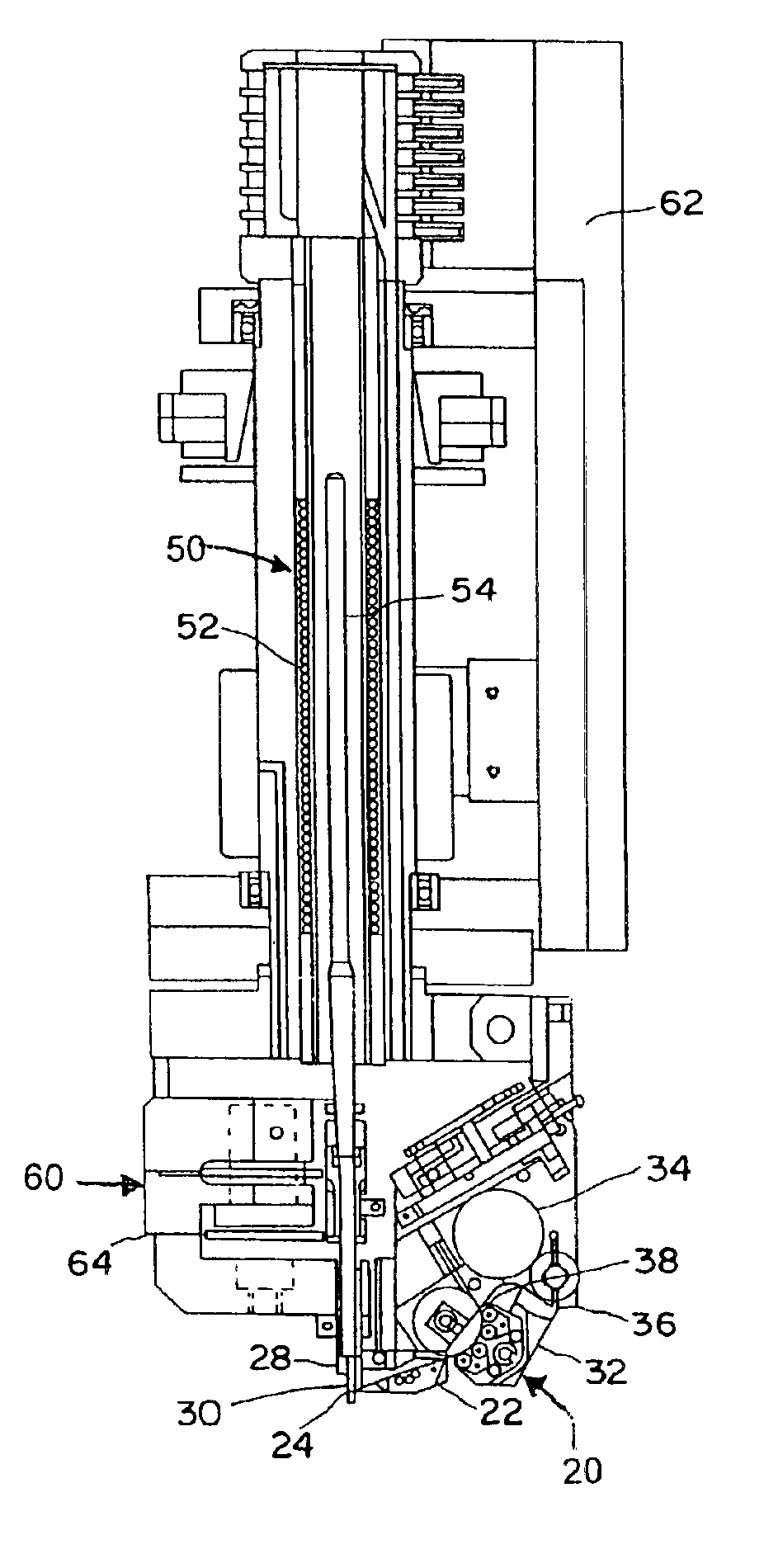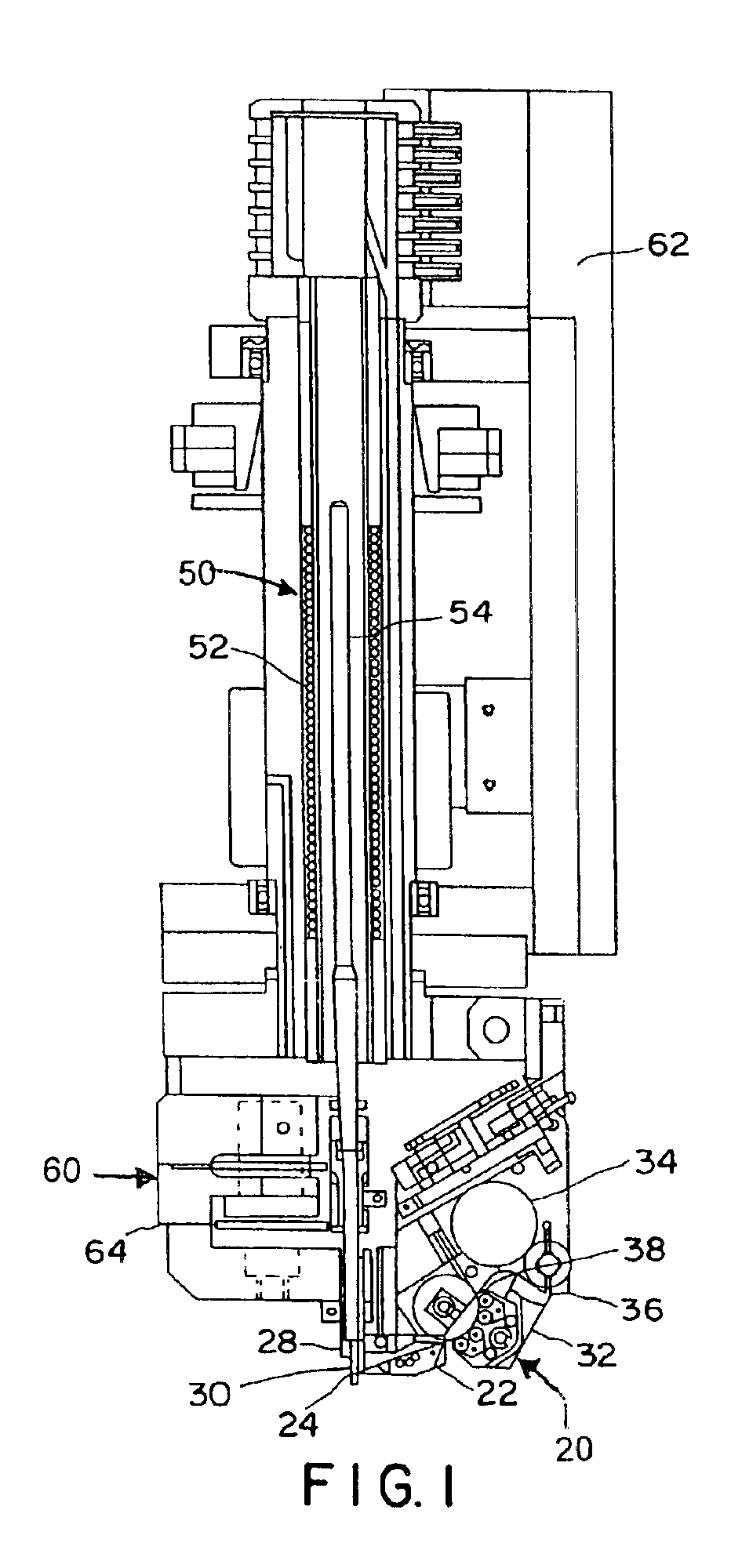Methods of optical filament scribing of circuit patterns with planar and non-planar portions
a technology of optical filament and circuit pattern, applied in the field of optical filament circuit board, can solve the problems of difficult to manufacture commercial interconnection cards with optical filaments, difficult to provide with known electrically wired backplanes, and difficult to control the size of optical filaments, etc., and achieves the effect of convenient mass production, low cost and quick delivery
- Summary
- Abstract
- Description
- Claims
- Application Information
AI Technical Summary
Benefits of technology
Problems solved by technology
Method used
Image
Examples
example 1
[0091]An apparatus as described above is used with optical filament to make a scribed filament circuit pattern with planar and non-planar portions. For example, a COILPRO™ 2000 series wiring machine or a COILPRO™ 4000 series wiring machine, both available from Advanced Interconnection Technology, L.L.C. (a Stratos Lightwave company) of Hauppauge, N.Y., can be used.
[0092]The substrate is a polyimide film commercially available from DuPont, Inc. (Wilmington, Del.) under the trademark KAPTON® 200HN, and is 50 μm thick. The substrate is prepared by bonding a layer of adhesive to one surface. The adhesive is an acrylic resin commercially available from 3M (St. Paul, Minn.) under the trademark VHB™ Adhesive Transfer Tape. The adhesive is 250 μm thick. The adhesive is bonded to the substrate using a roll laminator. To accomplish this, the two films are aligned to one another and passed between the rollers of the laminator. The compliant rollers squeeze the materials together.
[0093]The opti...
PUM
| Property | Measurement | Unit |
|---|---|---|
| temperature | aaaaa | aaaaa |
| output power | aaaaa | aaaaa |
| output power | aaaaa | aaaaa |
Abstract
Description
Claims
Application Information
 Login to View More
Login to View More - R&D
- Intellectual Property
- Life Sciences
- Materials
- Tech Scout
- Unparalleled Data Quality
- Higher Quality Content
- 60% Fewer Hallucinations
Browse by: Latest US Patents, China's latest patents, Technical Efficacy Thesaurus, Application Domain, Technology Topic, Popular Technical Reports.
© 2025 PatSnap. All rights reserved.Legal|Privacy policy|Modern Slavery Act Transparency Statement|Sitemap|About US| Contact US: help@patsnap.com



